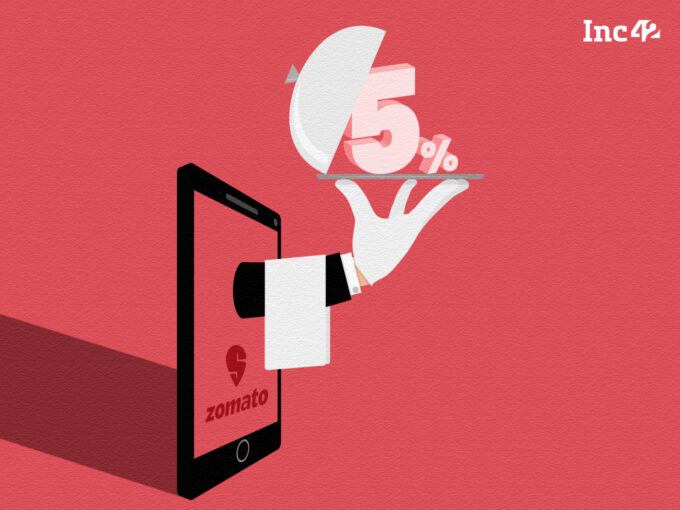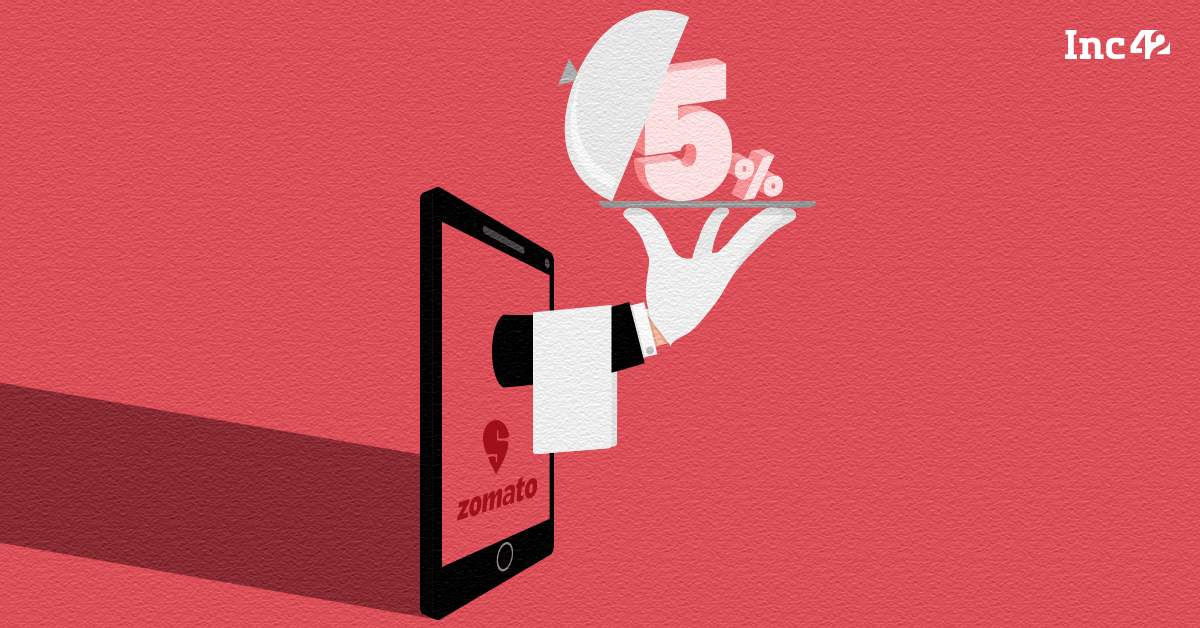Despite its being four months since the new GST recommendations on food aggregators came, it is unclear how the 5% GST levy will work — mostly pointing to a tepid rise in prices of the services
Currently, ride-hailing services have two options — payment of 5% GST on the entire sum of the ride including driver-partner fee, without claiming input tax credit (ITC) or they can claim ITC by paying 12% GST on the total of the bill
Zomato and Swiggy recently saw an unprecedented spike in their order numbers when Indians placed 4.5 Mn orders for food worth INR 165 Cr on December 31

In September 2021, the Goods and Services Tax (GST) Council, in its 45th meeting underlined that food aggregator apps such as Zomato and Swiggy, and cab aggregators such as Ola and Uber to pay tax at the final point of delivery beginning January 1, 2022. As the rules came into effect now, online aggregators such as Swiggy, Zomato, Uber, Ola and the likes will have to pay 5% GST over and above the existing 18%, making the services dearer.
“There is no new tax,” revenue secretary Tarun Bajaj had claimed in a statement previously underlining that the new laws only shift the burden of payment on the aggregator, rather than the service provider. While it would have been true in the case of food aggregators, the prices of cab aggregation services will definitely go up.
In the case of food services, the previous chain of GST payments, while ordering food online was that the restaurants charged 5% GST on food bills and the food aggregators charged an 18% GST commission from restaurants for delivery and marketing. All of the taxes are eventually included in the customers’ bills. Restaurants would collect the GST (18% commission + 5% food GST) and pay it to the government.
The current reform proposes that instead of collecting the GST from restaurants, food aggregators will collect it (5% GST) directly from the customers at the point of delivery — thus if the reform goes as planned, there won’t be much difference in the customers’ bills, only if the recommendations propose ITC benefit to either the restaurant or the aggregator (i.e. Zomato, Swiggy).
On the other hand, if Zomato and Swiggy choose to go for uniform slab rates without the ITC inputs, restaurants would not be able to set off ITC. Resulting in revenue losses, meaning higher food prices from restaurants’ end, rather than Zomato or Swiggy’s.
As opposed to the above, in an operator setup, there are two kinds of invoices that the customer receives — one being that on the driver’s fees and the other convenience charge. Previously, GST (18%) was only charged on the convenience fees levied by the operator (in case, Ola, Uber, Zoomcar, others) and not on the total value.
In the current scenario, ride-hailing services have two options — payment of 5% GST on the entire sum of the ride including driver-partner fee, without claiming input tax credit (ITC) or they can claim ITC by paying 12% GST on the total of the bill.
The move may seem even more hard-hitting after food delivery giants Zomato and Swiggy saw an unprecedented spike in their order numbers on New Years’ Eve (December 31). The platforms saw a combined 4.5 Mn orders selling approximately INR 165 Cr worth of food across the country.










